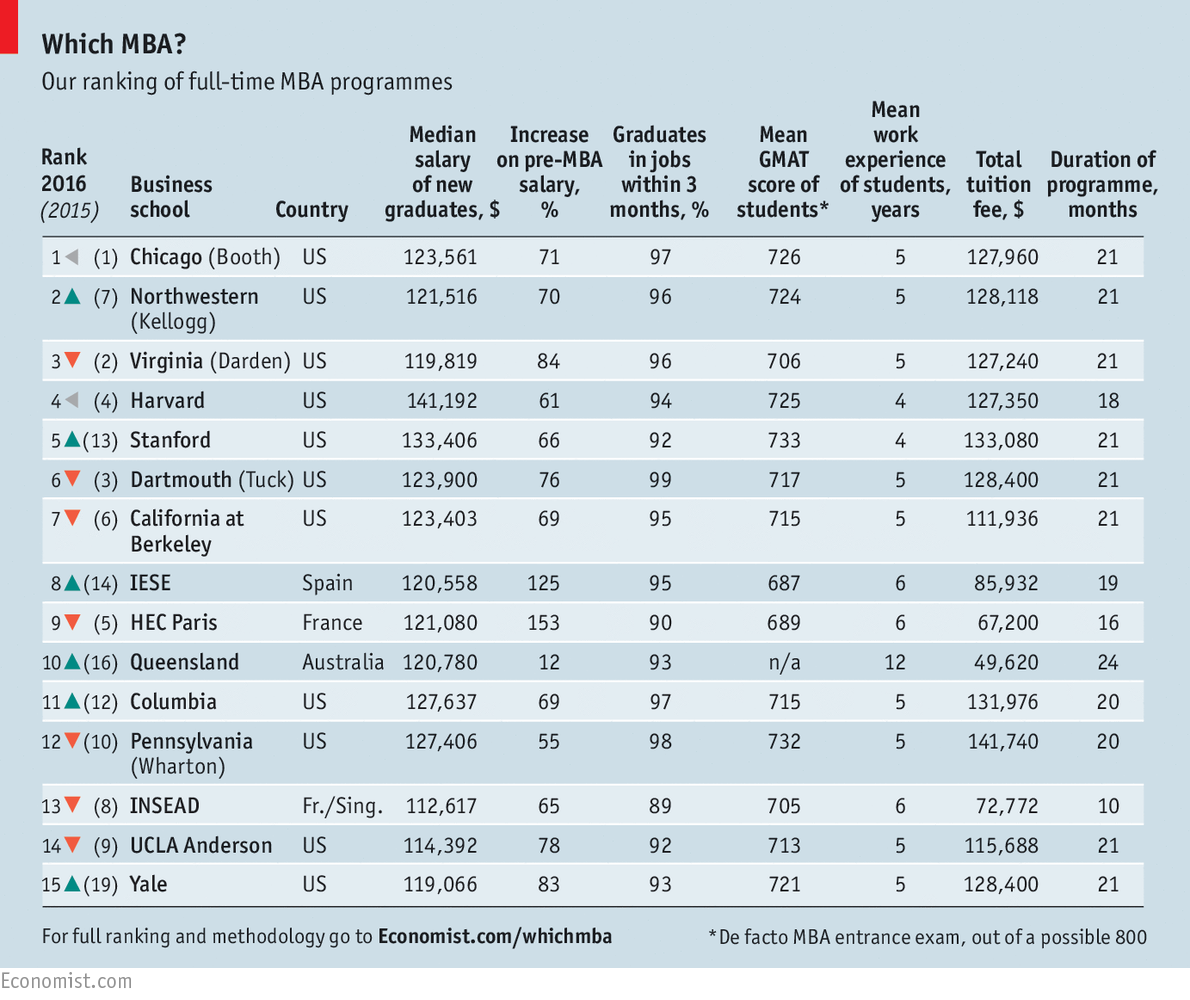
Chicago Booth took first place in The Economist’s 2016 best MBA programmes ranking, with the university coming in first for the sixth time in seven years.
Nearly all graduates of the top MBA programmes can expect to find a job immediately after graduation, with a basic salary well in excess of USD 100,000. The degrees, however, are quite pricey. The average cost of tuition at the top 15 schools is USD 112,000.
The US, the spiritual home of the MBA, dominates the ranking, represented by 11 of the top 15 schools.
The ranking is based on a mix of hard data and subjective marks given by students. It weights data according to what students tell us is important. The four categories covered are: opening new career opportunities (35% weighting), personal development and educational experience (35%), increasing salary (20%) and the potential to network (10%).
Methodology
Each year The Economist surveys thousands of MBA students and asks them why they decided to enrol on a full-time MBA programme. The weightings that The Economist uses for its ranking (see table below) are based on the importance students themselves place on different criteria.
To compile these rankings, journalist William Ridgers at “Which MBA?” compared an extensive variety of weighted factors.
Data were collected during spring 2016, using two surveys. The first is completed by schools with eligible programmes and covers quantitative matters such as the salary of graduates, the average GMAT scores of students and the number of registered alumni. This accounts for around 80% of the ranking. The remaining 20% comes from a qualitative survey returned by current MBA students and a school's most recent graduating MBA class. The Economist asks respondents to rate things such as the quality of the faculty, facilities and career services department. The magazine also asks them to give details of their salary, so that it can verify the data provided by the schools. For schools that have not signed up to the “Agreed Upon Procedures” of the MBA Career Services & Employer Alliance, an industry body that sets standards for reporting salaries, student data are used rather than those supplied by the institution. A minimum response rate—equivalent to 25% of the latest intake or 50 students/alumni (whichever is lower)—is required for schools to be included in the ranking.
All data received from schools were subject to verification checks, including, where possible, comparison with historical data, peer schools and other published sources. Student and graduate questionnaires were audited for multiple or false entries. Memory has been built into the rankings by taking a weighted average of data from 2016 (50%), 2015 (30%) and 2013 (20%) to provide a rounded picture of the school over a period of time.
Check out: How Trustworthy Are MBA Rankings?
The table below summarises the measures used to calculate the rankings together with their respective weightings. Salaries were converted at average 2015 exchange rates. The statistical methodology adopted for the ranking gives each business school a unique score (known to statisticians as a z-score). Unlike some other rankings, the Economist does not include any “equal” schools (for example, four schools ranked equal sixth followed by one ranked tenth). However, it should be noted that differences between some schools might be slight.
The Economist only publishes a list of the top 100 schools. In all, 143 schools were invited to participate.
Sources: The Economist Full-Time MBA Ranking, The Economist World's Best MBA Programmes



Comments